
“Unequivocally the best ‘first’ LP I have heard for years, Morning’s music defies description” praised Ripple’s glowing review, albeit some six months after the group’s eponymous debut sneaked out on the tiny Vault label.
Quite a compliment you may well think and a little too presumptuous?
Well maybe, but when Morning’s debut outing hit the record stores in November 1970, very few were fortunate enough to snap up this rare and increasingly sought-after record; a highly polished production, and, to this writer’s ears, arguably one of the most eclectic and innovative records of its time.
Undoubtedly there was tough competition when Ripple’s review hit the news stores in May 1971, what with David Crosby’s superlative debut solo album one of the leading contenders.
But whereas the musicians’ anonymity went a long way in ensuring Morning never graced the heights of their more self-promotional contemporaries, the music speaks for itself and remains as fresh and timeless as it was when the group wrapped up recording the LP in the summer of 1970. And that’s without mentioning the band’s equally superlative second LP, released nearly two years later.
By then, most of the musicians who eventually Morning had accumulated a decade’s worth of collaborative work.
Looking back over the group’s long and tangled history, Morning’s roots can be traced back to a San Fernando Valley high school outfit called The Coachmen, formed in the early months of 1960.
One of Morning’s central figures, pianist, organist and singer Jim Hobson (b. 27 December 1945, Chester County, Pennsylvania) and rhythm guitarist Terry Johnson, who played bass with The Coachmen, appear to have been members of this group near the outset alongside lead guitarist and front-man Matt Hyde.
While never a member of Morning, Hyde would become part of the tight circle of friends and later assist in engineering both of the band’s LPs.
Towards the end of 1960, another future Morning alumni, drummer and singer Jim Kehn (b. 30 August 1947, Los Angeles), who today prefers to be referred to as James Kehn, took over the drum stool but the line-up refused to settle.
Invited to join another local group, The Duvals, Hobson defected and spent the next four years playing around the L.A area, including a brief spell in 1963 providing back up for The O’Jays.
While with The Duvals, Hobson cut a lone 45 coupling “The Last Surf” with “Ferny Roast” on the Prelude label.
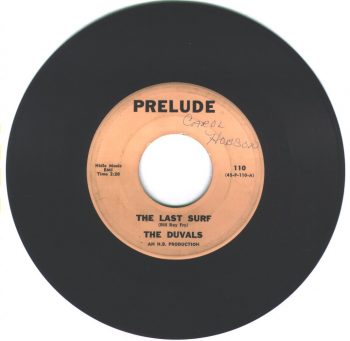
“The Duvals were several years older than I was and were gigging a lot, so I was making a bit of money during my high school years playing with them,” says Hobson, who also worked with several other groups during this time.
In spring 1965, after an eight-month club gig with two different bands, Hobson began recording and participating in demo sessions at American Recording Studios for producer Richie Podolor (more of which later).
To fill the vacant spot in The Coachmen, the remaining members turned to James Donnellan (b. 16 December 1946, Burbank, California), a prodigious guitarist, who grew up with the name Jay Lewis.
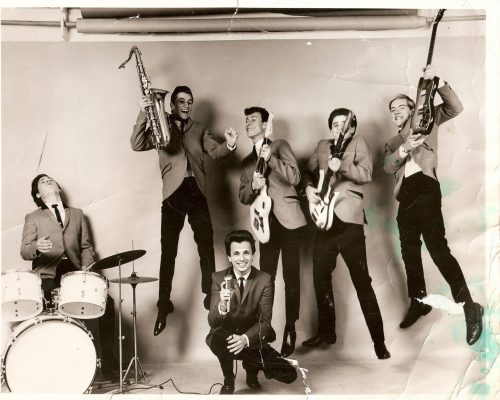
James Donnellan/Jay Lewis would become one of the central figures in Morning’s story and arguably the band’s most famous member thanks to his participation in Arthur Lee’s legendary group, Love with whom he recorded under the name, Jay Donnellan. But we are jumping ahead of ourselves here.
With the novelty of showcasing two lead guitar players, The Coachmen began to pick up more lucrative work in the valley.
Trading largely in instrumentals, the quartet remained steady over the next four years but in 1964 took on a front man, singer Bob Mercer, as well as sax, organ and flute player Mike Dean, who was snatched from Richie Ray & The Del Prados.
“One day my stepbrother and I heard a band without a drummer at a neighbour’s,” says Kehn, who ended up taking the job and working with The Coachmen and Richie Ray & The Del Prados simultaneously.
“Mike Dean was playing saxophone with them. I asked Mike to do some gigs with The Coachmen, so he played on and off with the group. I also played several gigs with Richie Ray and recorded a dance song called ‘The Twirl’ at American Recording in Studio City.” (Ed: During 1965, Dean, Hyde and Kehn also played as a trio in The Krabs).
Photographs from this period reveal that, for a brief time, The Coachmen also secured the services of two female singers.
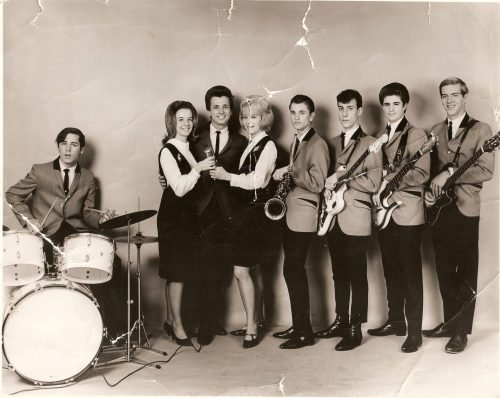
However, by late 1965, both they and Mercer (who would years later assume a management role for Morning) had departed as The Coachmen morphed into a new identity, the inappropriately named, Wind.
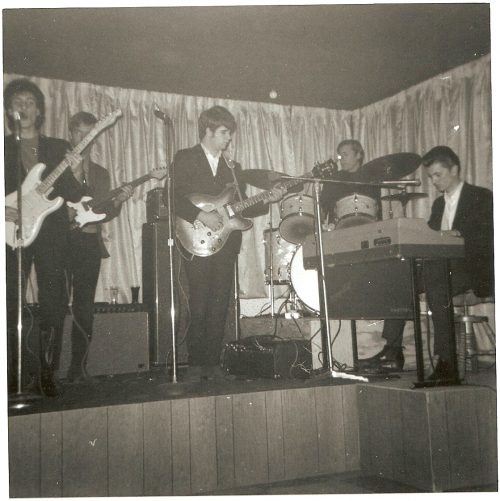
Under its new guise, the band began rubbing shoulders with L.A’s hip and happening crowd, and in early 1966 got hired to play private parties for blonde bombshell Jayne Mansfield and English actor Peter Lawford.
Word soon spread among the well-to-do and socially connected, and in a truly remarkable turn of events, the American government asked the musicians to entertain the Mexican president on his arrival in the United States!
While all of this was going on, Kehn had started working on sessions at American Recording Studios with producer Richie Podolor, oblivious to the fact that Podolor had recently taken on former Coachman, Jim Hobson as a session pianist.
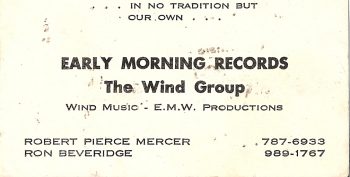
Through Kehn’s association with Podolor, Wind were able to utilise the producer’s studio and paid for the recording of two tracks for a prospective single.
(Ed. In an interesting side note, Hobson’s entry into American Recording was a former DuVal member, Roger Yorke, who was writing and recording some demos at American Recording and Screen Gems for Lester Sill. Yorke and DuVal band leader Bill Wild had been in the Munster’s TV show band, and had played gigs promoting the TV programme.)
Issued in April 1966 on the obscure Van Nuys-based label, Early Morning (an early nod to the later group), the single coupled the Hyde, Kehn and Mercer penned “Your Man Is Gonna Leave You”, with the intriguingly titled, “He Who Laughs Last (Laughs Best)”, a Hyde-Mercer co-write, featuring Kehn and Lewis singing harmony lead.
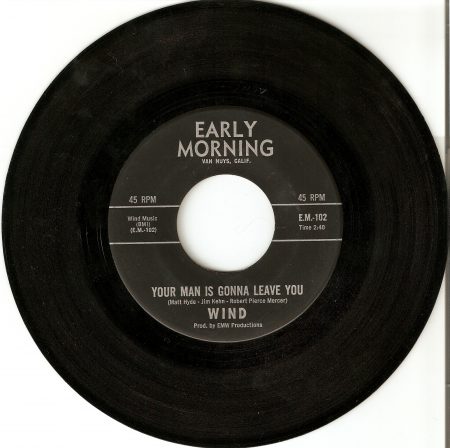
As very few pressings were made, original copies are virtually impossible to find these days and would certainly fetch a hefty price.
Even so, and despite its rarity, the A-side surfaced decades later on the compilation album, Teenage Shutdown 15: She’s A Pest, released on the tiny Teenage Shutdown label in 2000.
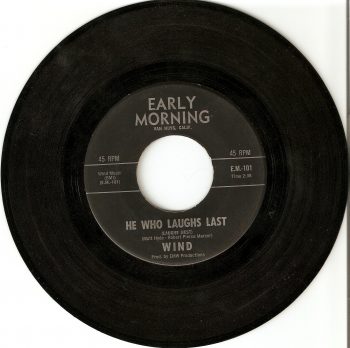
Interestingly, a short while before the single was cut, the band (possibly still billed as The Coachmen) had recorded three tracks on an acetate, which surfaced years later attributed to Moorpark Intersection (more of which later) – “Come and Take a Walk with Me”, “Young Married Blues” and “Your Man” (aka “Your Man Is Gonna Leave You”).
Kehn recalls rehearsing “Come and Take a Walk with Me” in a back room at the Lively Arts music store in Northridge. He believes Jay Lewis wrote the song.
“You can definitely hear The Beatles influence – though we all liked them, Jay and Terry were the stalwart fans back then,” he says.
“I think Mike sang the lead vocal, Jay the low harmony and I did the high harmonies.”
Kehn says that Mike Dean wrote the basic parts of “Young Married Blues” and Matt Hyde and Jay Lewis wrote the chorus.
“Matt sang lead vocal and I sang harmony,” he recalls. “Jay played the continuous lead guitar parts weaving in and out of the song, with Mike on keyboards. I played the drums with Terry on bass and Matt playing other guitar parts.”
The final track, “Your Man”, was a demo version of the soon-to-be cut “Your Man Is Gonna Leave You”.
“It’s slightly different from the 45 we put out with a more melodic bridge and a bit rougher feel,” says the drummer.
“We cut it at American Recording with Richard Podolor and Bill Cooper at the controls. Matt and I sang unison and then broke into harmonies.
“It may have been Podolor who sat in with his fantastic old Telecaster – he let us record for free in return for allowing him and Bill to produce and play on the tune. I may have done some sessions for them in exchange.”
However, when the lone single failed to take off, Wind’s members scattered to pursue separate projects with Kehn resuming his session work with Podolor.
The drummer’s former band mates, Jay Lewis and Terry Johnson decided to stick together and joined forces with the final piece in the Morning jigsaw, singer/songwriter and guitarist Barry Brown (b. 4 August 1947, Toronto, Canada), who had moved to California with his family at an early age and taken up drums in his teens.
Fresh out of high school, Brown signed on with Bobby Bond & The Agents as a drummer and with Lewis and Johnson also added to the group’s ranks, the quartet (later expanded when pianist Dick Hargreaves joined) began playing the clubs in the San Fernando Valley, including the Fireball Inn.
Judging by everyone’s recollections of this “hazy period”, Lewis and Johnson’s tenure with Bobby Bond lasted little more than a year.
During their time playing together, Lewis and Brown forged a strong friendship and when the pair decided to go their separate ways in the summer of 1967, a tacit understanding was that they would collaborate in the future.
“I was very close with Jay for a quite while, even though we weren’t involved musically,” says Brown. “He was going different directions and I was going different directions but we were always tight. We were always hanging out.”
While Brown moved on to form the original version of East Lynne with bass player Jack McAuley and singer/songwriter and guitarist Rick Dinsmore, Lewis and Johnson revived the old Wind line-up with former cohorts, Matt Hyde, Mike Dean and Jim Kehn, re-branding themselves as Moorpark Intersection.
One story goes that it was Pat Hicks, a local music store owner in the San Fernando Valley, who introduced the group to jazz guitarist Howard Roberts.
It was Roberts who used his connections at Capitol Records to get Moorpark Intersection signed to the label and placed under the wing of hip and up and coming producer, David Axelrod.
However, it’s possible Terry Johnson was the link. “I started at Benson Electronics making ‘boutique’ amps for Hollywood studio musicians,” he says.
“The company was owned by Howard Roberts and Ron Benson with several studio musicians being minor shareholders.”
Whatever the truth, the future looked promising but it wasn’t to be. As work commenced on recording a single in November 1967, Axelrod got pulled away from the session.
“David’s time got consumed with issues he was having with a more important client of his, Lou Rawls,” remembers Kehn.
“So he passed us over to a new house producer – Bob Padilla – and this proved to be a death knell because we had no support anymore, got lost in the shuffle and withered away.”
The ensuing session produced two completed tracks, which turned up on a lone single in early 1968.
The breezy folk-pop cover of in-house writer Jack Keller’s “I Think I’ll Go Out and Find Me a Flower” may not have been the musicians’ desired choice of material but the song is executed brilliantly.
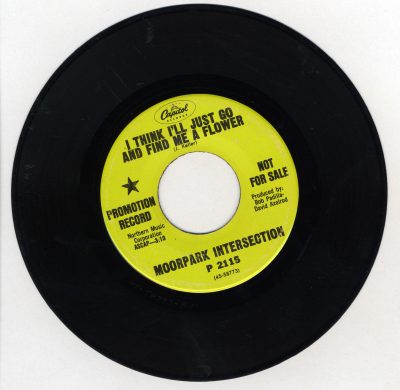
Kicking off with Lewis’s ringing acoustic guitar, the track builds up to a superb and atmospheric flute solo courtesy of Mike Dean, who also provides the lead voice, culminating in some excellent harmony work.
The flip side, “Yesterday Holds On”, written by David Axelrod and Jay Lewis, is arguably superior and is notable for its dense vocal harmonies and intricate guitar work that remind this listener of Curt Boetcher and Gary Usher’s innovative work with Sagittarius.
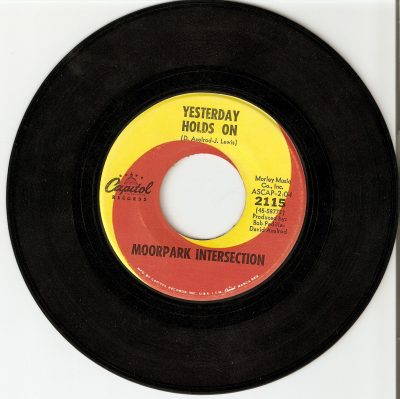
Also during the sessions, the group recorded a third track “Sure Is Good” as a rough take on 10 November, which survives as an acetate in Kehn’s possession.
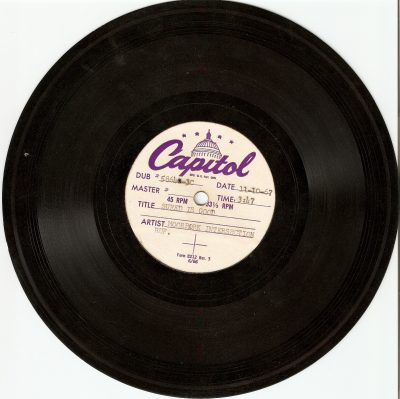
Like its previous incarnation, Wind, Moorpark Intersection’s lone recording suffered a similar fate chart-wise and around February 1968 the musicians once more scattered to pursue separate projects.
To add to Kehn’s frustration, it was while he was pondering the Capitol deal with Moorpark Intersection that he made the fateful decision to turn down an offer to join another group destined for greater things.
“A friend of mine had asked me to join him in a ‘sure thing’ band as we were working out contract issues but I turned him down,” rues the drummer. “That group became Kenny Rogers and The First Edition.”
With Moorpark Intersection consigned to the history books, Kehn began gigging with another local group, The Accent’s Limited. To help pay the bills, he also reconnected with his former employer.
“I played on a session for Richie Podolor, which produced several songs on Donovan’s Barabajagal album in 1969,” recalls the drummer.
“I played on ‘Atlantis’, ‘To Susan on The West Coast Waiting’, ‘I Love My Shirt’ and ‘Pamela Jo’. I sang background on a couple of tunes as well with Davy Jones of The Monkees.”
Tired of the endless slog of playing night after night, Kehn’s former band mate Matt Hyde hung up his guitar and joined an existing business partnership with his old friend from The Coachmen, Jim Hobson.
“I had drifted into the recording studio business with Joe Long by accident, way before Hyde got involved,” says Hobson.
“During these times, I continued to do club and casual work along with some recording work.”
As well as session work with Richie Podolor in 1967, appearing on six Sandy Nelson albums for Imperials Records and also touring with the drummer, Hobson had also been working for Holzer Audio Engineering, building and installing recording equipment and consoles, including A&M’s new studios, located on the site of Charlie Chaplin’s old sound stage.
With the help of financial partner, Joe Long, Hobson (abetted by Hyde as business partner) built “The Recording Studio” (including the mixing console) in Tarzana, California, which is where Love and Hoyt Axton recorded among others. In 1970, it would also provide the setting for Morning’s own studio sessions.
While all of this was going on, Jay Lewis, who’d taken to being called Jay Donnellan, had signed up with The Mustard Greens, an upscale club band led by former Love members Snoopy Pfisterer and Tjay Cantrelli.
Donnellan’s recollections of this band are hazy but he does recall one humorous incident while playing at the Factory in Beverly Hills (most likely in May 1968).
“The Beatles came in the place one night and watched a couple of sets. The leader [of the group] had an ego the size of a small planet and when The Beatles sat down, he said, ‘Okay Lady Madonna 1,2, 3,4’ and I was so embarrassed I wanted to melt into the corner.”
While playing with Snoopy’s group, Donnellan made sure to keep in touch with Barry Brown, and on numerous occasions dropped in at East Lynne’s gigs at the Corral in Topanga Canyon (where they were house band) to sit in on several numbers of their set.
“We played at the Topanga Corral before it burnt down the first time,” remembers Brown.
“A lot of famous people used to jam at the Corral, you know like Buffalo Springfield, Neil Young, they all lived up there. Spirit lived up there too. I remember jamming with Stephen Stills.”
Fortunately for Donnellan, his tenure with The Mustard Greens was sparingly short and a more attractive offer soon appeared on the table, an invitation to audition for a revamped Love.
“Snoopy was the one who hooked me up with Arthur Lee and I did an audition at Arthur’s house with George [Suranovich] and Frank [Fayad] already in the band” recalls Donnellan, who signed up to Lee’s new vision of Love in October 1968.
“I thought it was going to be something like Forever Changes and pulled out an acoustic guitar but they dove into ‘August’ so a quick change of guitars and amp and that was my ‘audition’ song. One hour later I was in the band.”
Donnellan made his public debut with Love at the Shrine Exhibition Hall in Los Angeles on 9 November and remained with the band for about a year, contributing to the Elektra LP Four Sail and the double set, Out Here, issued on the Blue Thumb label. It was while with Arthur Lee’s group that Donnellan began to take his song-writing seriously and penned a couple of notable songs.
“The ‘Singing Cowboy’ song I did co-write with Arthur,” says the guitarist.
“I had the melody and the chords and I lived in Laurel Canyon somewhere near him. He came over to visit one day and we talked for a minute and I said, ‘Hey, check this out’ and he said, ‘Whoa, I’ve got a lyric for that’. The other one, ‘I Still Wonder’ – that was my own drug experience. I wrote that without him and just brought it to the band and they recorded it. Since then, many, many albums give him half the credit and all of the publishing.”
As events turned out, it was Donnellan’s decision to take Love into Hobson’s recording studio in Tarzana to finish up recording Out Here that ultimately paved the way for Morning in early 1970.
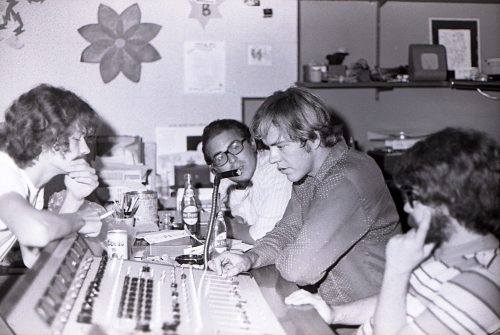
“Jay was playing with Love and I went to one of their recording sessions to listen,” recalls Kehn, who was responsible for putting the two musicians back in touch and turned down an opportunity to replace Suranovich.
“I suggested to Jay that they contact Matt or Jim to use their studio, which they did.”
Hobson’s studio provided the perfect environment for Love to wind up the Out Here sessions. Unfortunately, it was also the setting for Donnellan’s dismissal from Arthur Lee’s group.
“I can remember the last moment with Love very clearly,” recalls the guitarist.
“One day I showed up to the studio and the door was locked. I banged on the door and it was still locked. I sat down and waited for three or four minutes and then all of a sudden the door opened and Arthur stuck his head out and said, ‘We don’t need you today’. I said, ‘Oh Really?’ and he said ‘Yeah, we got someone else on this song’ and closed the door and locked it.
“Later that day, I got a telegram from the manager or the record company and to this day I remember the exact words because it said: ‘Pursuant to your desires and wishes you are no longer a member of the group Love’.”
I’d like to thank Barry Brown, James Donnellan, Jim Hobson, Terry Johnson and James Kehn for generously giving up their time to help piece Morning’s story together. Thanks as always to Mike Paxman for his help over the years. Thanks to Mike Duggo for info about The Coachmen acetate.
Huge thanks to Jeff Allen for the kind use of his photos. His work can be seen at this website.
Morning now have a MySpace page: www.myspace.com/morningfromthe70s
Copyright © Nick Warburton. All Rights Reserved. No part of this article may be reproduced or transmitted in any from or by any means, without prior permission from the author.
This article was originally posted on the Nick Warburton website on 22 June 2009.

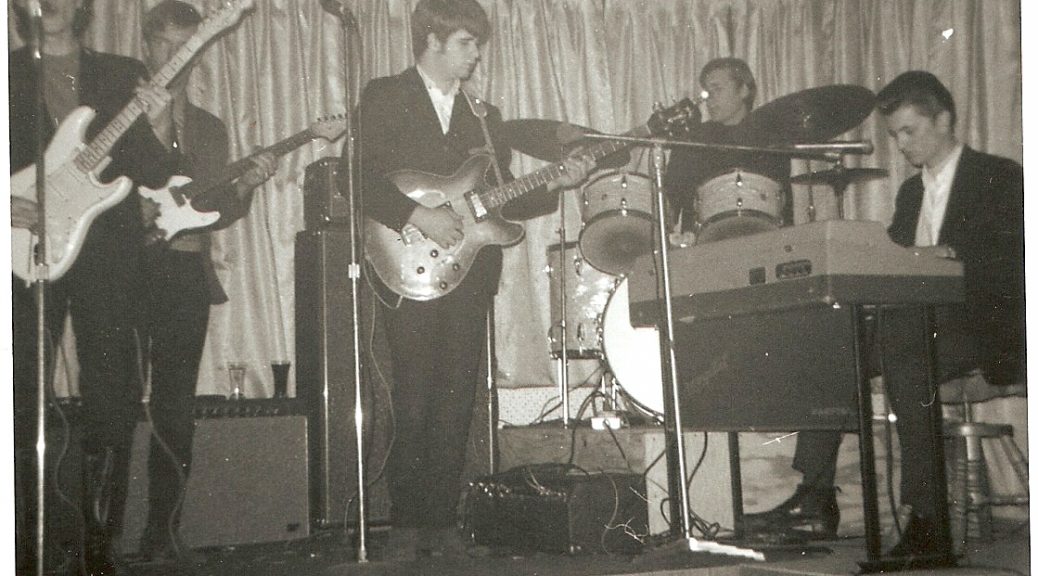
Very well written, and it’s nice to know the complicated history of the members. The guys were friends of mine back in the day. They had asked me to paint a cover, it may have been Barry as II knew him the longest. I was homeless then, I’m not sure they knew that. I painted the cover on canvas on the floor of a gas station store room. I painted a number of Morning related paintings, one I still trying to track down to photograph for may Art Log, “Painting in a life through the portal of Time” It’s a journey through 6 decades of painting written and designed in photoshop. It’s a bit over 400 pages currently. I believe I gave Barry one of the painting I wish I could photograph before it’s published